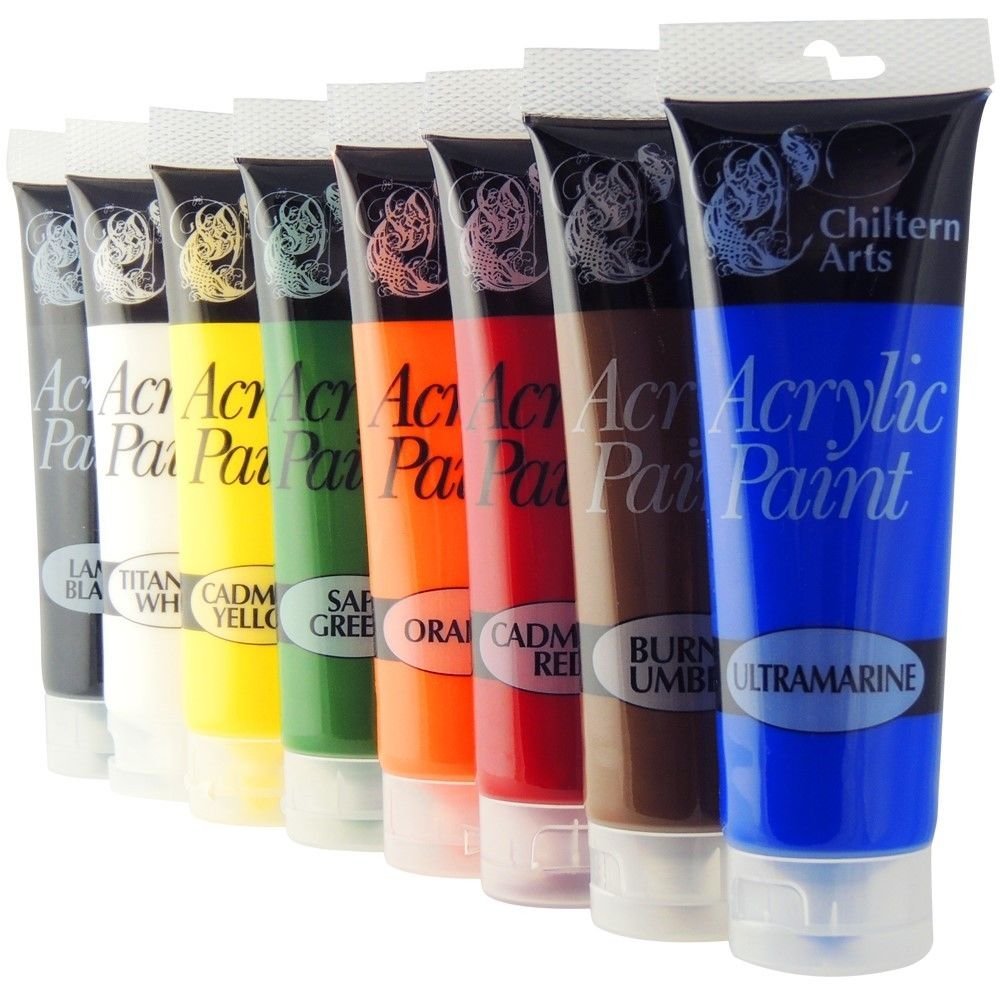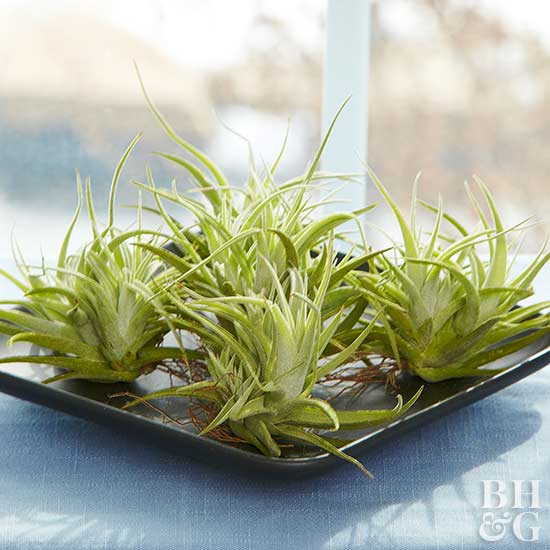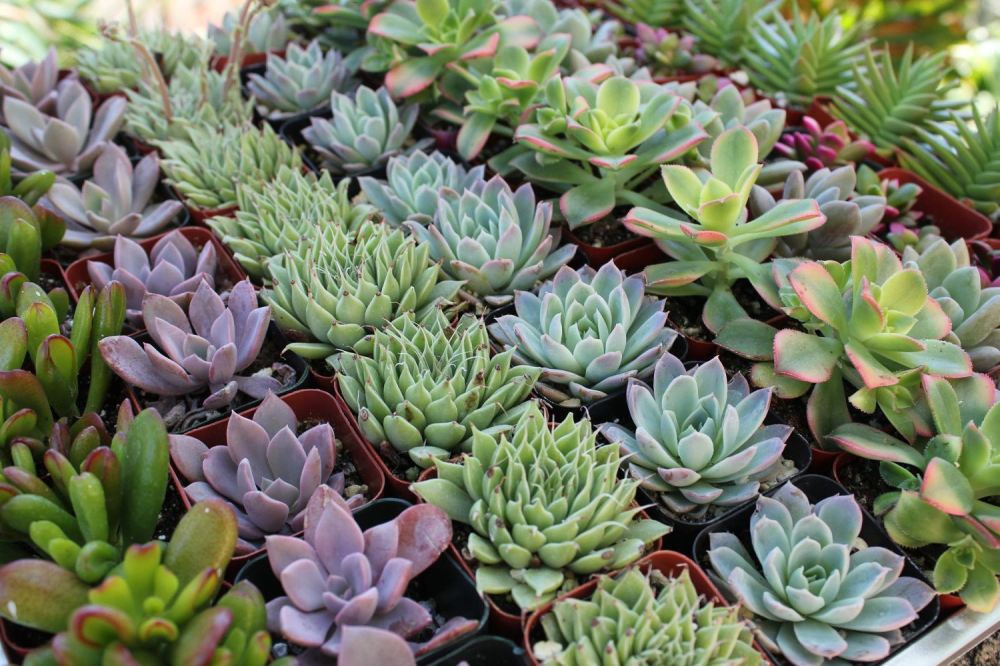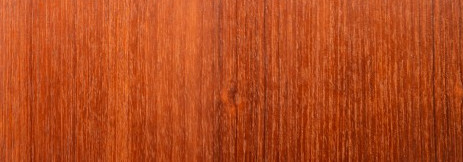
Terrariums are decorative gardens that are grown in saleable glass containers that provide just enough of an opening for the gardener to access their plants. Terrariums can also be grown in open glass containers.
In many ways, a terrarium is like an aquarium, except instead of fish, they are used to house and grow plants.
Because the plants are grown in glass containers, terrariums are often considered self-sustaining small gardens.They are a small, enclosed environment for certain plants. Think of it as a mini-greenhouse. The containers for terrarium gardens are typically transparent, such as glass or plastic.
There are mainly two types of terrariums, closed and open. closed terrariums have a removable lid while the open terrarium does not.
Closed Terrariums
They are indoor gardens in a sealed container. The plants and the soil in the terrarium release water vapour essentially recycling water. The vapour is then collected onto the walls of the vessel and trickles down to the soil. Terrariums are self-nourishing, which is why they require little maintenance, if sealed. Tropical plant varieties, such as mosses, orchids, ferns, and air plants, are generally kept within closed terrarium due to the conditions being similar to the humid and sheltered environment of the tropics.
Example
Ferns terrariums

Ferns- Lots of ferns thrive in moist and humid terrariums, which means they should be in a closed terrarium. With some ferns, they need to be trimmed because of how high that can grow. So, if you have a small terrarium, make sure to get a low growing fern.
Moss Terrariums

Open terrarium
Open terrarium are better suited to dry plants such as succulents. Not all plants require or are suited to the moist environment of closed terrarium. For plants adapted to dry climates, open, unsealed terrariums are used to keep the air in the terrarium free from excess moisture. Open terrarium also work well for plants that require more direct sunlight, as closed terrarium can trap too much heat potentially killing any plants inside.
Example
Cacti terrariums

Cacti terrariums love dry surroundings, so it’s best that this type of terrarium have a constant air flow.
Carnivorous terrariums

Carnivorous terrariums prefer bright light and easy access to food so its best to have an open mouth glass container. Most carnivorous plants need moisture and humidity. If the plants are well fed and taken care of they could bloom.
Succulents

Most types of succulents like to grow in a dry habitat, so that the soil doesn’t get to moist. Also, succulents shouldn’t be watered a lot, only once every week or two. Succulents and cacti would pair together well, since they have the same needs. There are many more different plants that can be used in a terrarium. The tricky part to building a good terrarium, is to find plants that have the same survival needs. It may take a lot of plants to die before getting the combinations right.
Orchid Terrariums
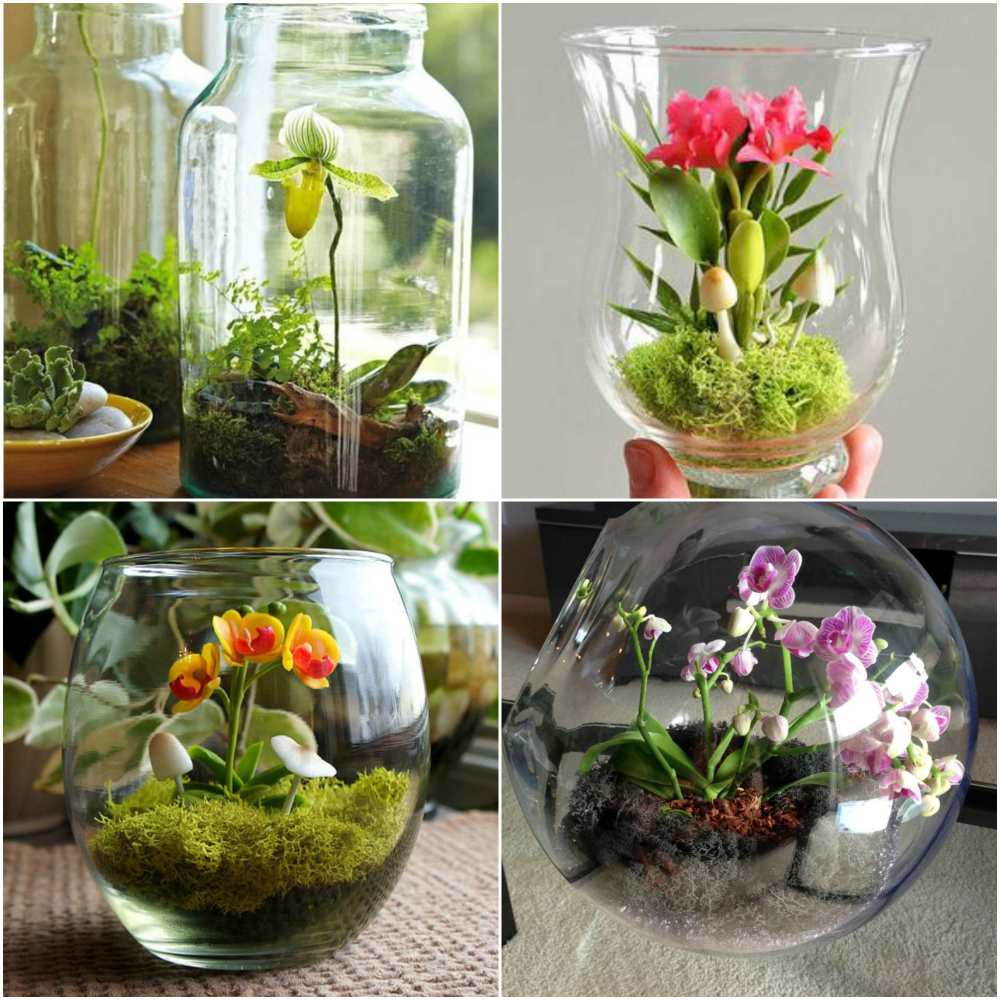
There are many species of orchid plants that can be used in an your terrarium. it can be either open or closed. Some of the best and most preferable types of orchid plants for terrariums are
Phalaenopsis or moth orchids
Vanda orchid or Singapore orchid
Slipper orchids
Cattelya orchids
Want Terrarium vases ?
FAQ
- How do you make terrariums?
1.Buy a special terrarium case to hold your garden or make one of your own out of a soda bottle, fish tank, fish bowl or vase.
2.Then fill the bottom of your container with half the amount of the layer of soil you plan to use. You may lay rocks as your first layer in the terrarium, but this up to personal preference.
3.Add any large rocks or pieces of driftwood that you would like to include in your garden.
4.In the soil, make a hole big enough for the roots of the plants to rest.
5.Remove the plant from its container you may need to lightly massage the roots to loosen the roots from the soil.
6.Position the plants in the thin layer of soil and add the second layer of soil around the plants. Press somewhat firmly the new soil level should be about the same level as the soil of the plants original root ball.
7.Get creative and mix up the plants, colours and sizes.
2) What plants work best in terrariums?
Typically, foliage plants and plants that grow slowly work best avoid fast growing plants. example for slow growth are
1.Ferns Maidenhair, Birds nest, Button ferns
2.Carnivorous plants, Venus fly traps, Pitcher plants, Sundew plants
3.Dwarf palms
4.Airplants, Tillandsia
5.Succulents- cacti, Hawthornia, Echeveria, Crassula, etc.
6.Peperomia
Ferns, carnivorous plants and air plants are quite difficult to grow without terrariums. So, if you would like these plants in your home, we recommend purchasing or making a terrarium.
3) What are the benefits of terrariums?
1.They help grow plants that would be difficult to grow in dry air.
2.They provide a confined space for a garden and mini garden.
4.You can use artificial light, such as LED or fluorescent very efficiently.
5.Terrariums don’t need to be watered often.
4) How do you care for terrariums?
Terrariums are low maintenance for the most part but we do have some suggestions to keep your terrarium long lasting and healthy.
1.If you choose to grow ferns, trim leaves to prevent them from overgrowing.
2.Make sure to remove yellow and brown leaves from any plants in your terrarium. This is typically a sign of disease or pest.
3.If you have an open terrarium, monitor for pests such as gnats or mealy bugs.
4.If you have closed terrarium, you may want to remove the lid every now and then to let in some fresh air.
5) How to water Terrariums ?
The types of plants found in terrariums tend to be hardy plants that don’t require frequent watering. Also, the greenhouse-like structure of terrariums recycles water instead of evaporating water into the ambient air with normal indoor plants.If closed, you might be watering them (on average) once a month but this will vary depending on a variety of factors. Open terrariums benefit from being watered every 3-6 weeks. Rather than watering on a schedule, check the soil to see if and how much water your plants need.
6) What type of soil works best in terrariums?
Coco coir, peat moss or houseplant soil works with most plants, besides succulents which prefer a well-drained inorganic medium. Some people choose to make their own soil but if you’re short on time, garden store houseplant soil works just fine. For succulents, you’ll need soil with a sand or gravel mixture.
7) Do terrariums make good gifts?
Of course they do! Not only are they low maintenance, but they are a beautiful addition to any home, apartment or business.
8) Do terrariums smell?
In general, no. They actually smell quite nice with an earthy odour. But, if yours happens to smell rotten, its most likely a sign of root rotting or over watering
9) Can you plant trees in terrariums?
Bonsai trees or small junipers might work but that’s about it.
10) What are hanging terrariums?
They are simply terrariums that hang from a structure, like a wall sconce.
11) What is the difference between indoor plants and terrariums?
Indoor plants (houseplants) are typically used in terrariums. However, most plants chosen for terrariums are slow-growing and many are plants that are otherwise difficult to grow without high humidity or high light.
12) Do terrariums need air?
Yes, but plants in airtight, or closed terrariums, recycle air. During the day, sunlight promotes the growth of sugars during the process of photosynthesis. Photosynthesis converts carbon dioxide into oxygen, releasing it into the terrarium.
In a closed terrarium, you may want to remove the lid to let fresh air into the terrarium, but a closed terrarium will not damage the plants.
13) Which kind of containers work best for terrariums?
Glass candy jars, fish tanks with light bulbs, goldfish bowls and coffee pots all work very well as terrarium containers. You might even choose to use a wine bottle, but planting would be difficult due to the narrow opening.
14) Do terrariums need sunlight?
Most need either direct or indirect light but artificial light may also be used. There are three types of light you can provide for your terrarium.
1.Direct sunlight
2.Indirect sunlight
3.Artificial light
It is recommended to use fluorescent or LED bulbs. Avoid incandescent bulbs.
If you choose to place your terrarium in direct sunlight, you may want to remove the lid on a closed terrarium because it might get too hot for the plants with the lid on.
15) Do terrariums need to be airtight?
Terrariums are fine if they are airtight, but we suggest removing the lid periodically (about once a week or even daily) to allow fresh air into your garden.
16) Can terrariums be made of plastic?
Sure! Plastic containers, like those made out of acrylic, work just fine. You can also buy anti-fog plastic containers, which prevent condensation build-up and allows better visibility these are generally more expensive.
17) How long do terrariums last?
Terrariums can last anywhere from several years or even longer, if well maintained.
18) Do terrariums need air?
Yes, but plants in airtight, or closed terrariums, recycle air. During the day, sunlight promotes the growth of sugars during the process of photosynthesis. Photosynthesis converts carbon dioxide into oxygen, releasing it into the terrarium.
In a closed terrarium, you may want to remove the lid to let fresh air into the terrarium, but a closed terrarium will not damage the plants.
19) What supplies do you need to make a terrarium?
You all need the following:
1.A glass or plastic container
2.Rocks, if you choose
3.Moss, if you choose
4.Soil (growing medium)
5.Plants that won’t overgrow (generally miniature or dwarf plants)
6.Spoon for placing soil
7.Long tweezers for putting materials into vessel
Klairvoyant Craftastic





